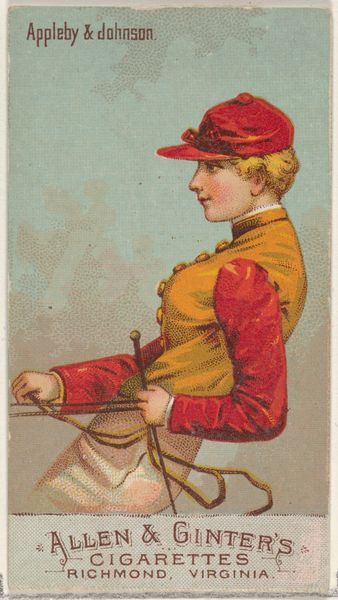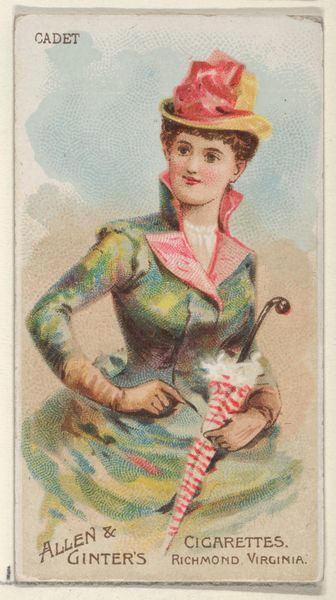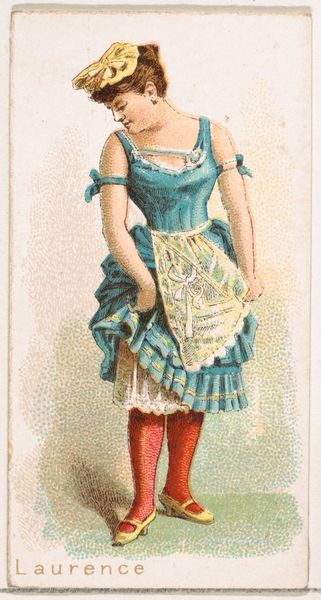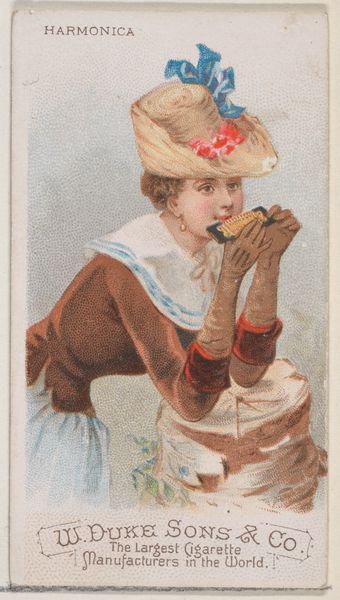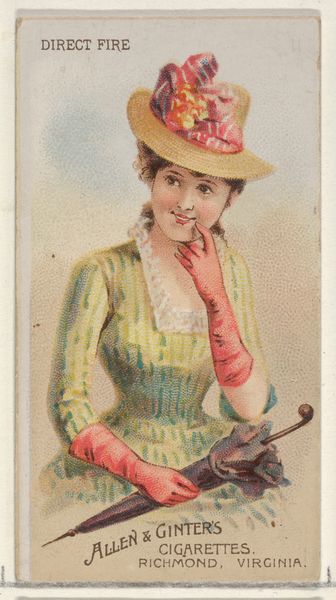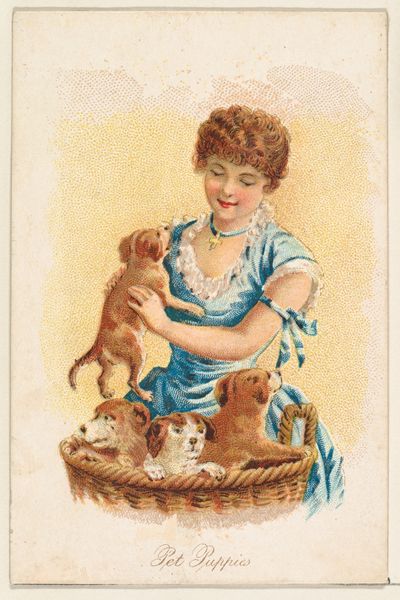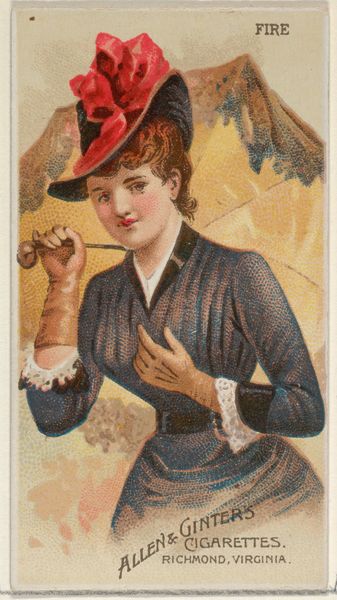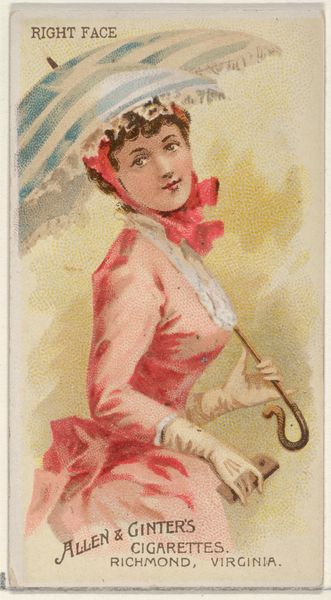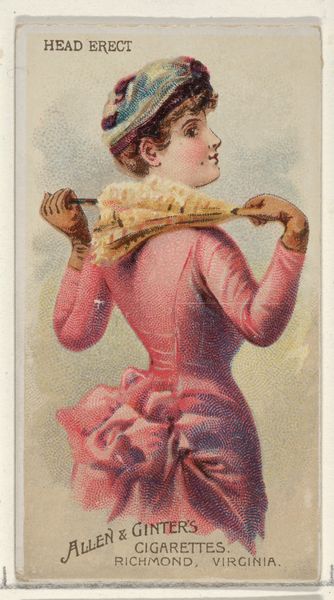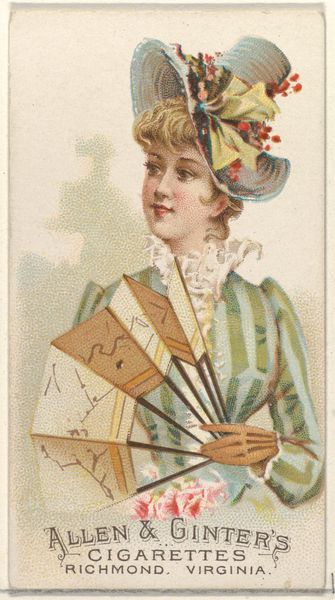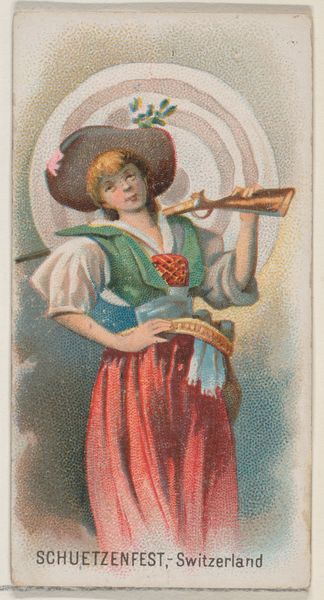
Plate 23, from the Fans of the Period series (N7) for Allen & Ginter Cigarettes Brands 1889
0:00
0:00
Dimensions: Sheet: 2 3/4 x 1 1/2 in. (7 x 3.8 cm)
Copyright: Public Domain
Curator: What strikes me immediately is the softness, the slightly faded pastel shades... there's a delicate, nostalgic air about this little print. Almost feels like a dream half-remembered. Editor: This is "Plate 23, from the Fans of the Period series," a chromolithograph trading card produced in 1889 for Allen & Ginter Cigarettes. These cards were tucked into packs as collectables. Curator: Trading cards? Cigarettes? Suddenly, it's less dreamy and more… strategic. Like, even dreams can be commodified, right? Editor: Absolutely. And it's interesting to see how these everyday objects embedded larger cultural narratives. This card, part of a series, showcases different eras of fans and, by extension, ideas about femininity. Look at the main figure, adorned with a hat and holding a leaf-shaped fan. The fan shows the image of two other figures, that tells a story. It suggests notions of coy flirtation. Curator: The detail is amazing for such a small piece. It's almost a meta-narrative—a story within a story, mediated by a commercial enterprise. It reminds me of how Instagram now works with these pictures inside pictures, and of other moments we see depicted by these small scale narrative tools! Editor: These fans often held coded meanings; they were tools of social communication. The gesture, the tilt, the specific type of fan - all conveyed subtle messages. Think of them as analogue emojis. The lady hides with a playful facial expression behind the image of two lovers represented on the leaf. I wonder what story does the "narrator" want to deliver to the spectator? Curator: The fan depicts, even if faintly, the desire for romantic encounter... or something along those lines. Perhaps the manufacturer thought such suggestive iconography would attract customers to smoke and consume more. Is it terrible if I imagine somebody back then kept these in their pockets like little treasures? I can almost hear the rustle of silk. Editor: In the context of its time, this card would have been part of a larger visual culture, constantly reinforcing specific ideas about beauty, status, and consumerism. It is an icon that represents the image within an image. But also a marketing strategy in times in which modern tools of social networking and representation did not exist as such. This plate tells an alternative way of building trends by small art objects! Curator: Makes you wonder what our own "cigarette card" equivalent will be, 150 years from now, that reveals our hopes, dreams, and hidden desires. It may very well be our smartphone.
Comments
No comments
Be the first to comment and join the conversation on the ultimate creative platform.

